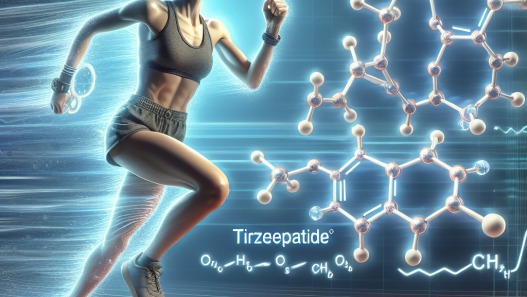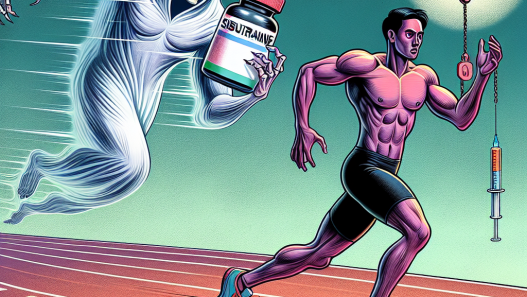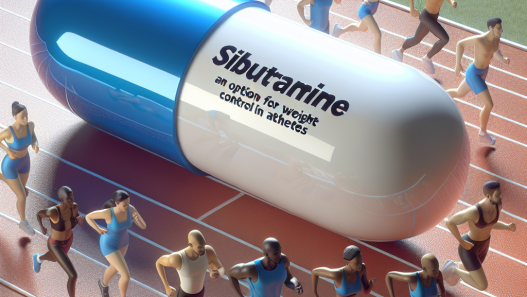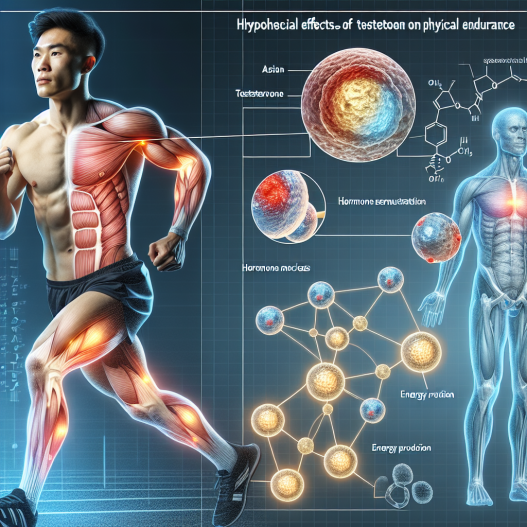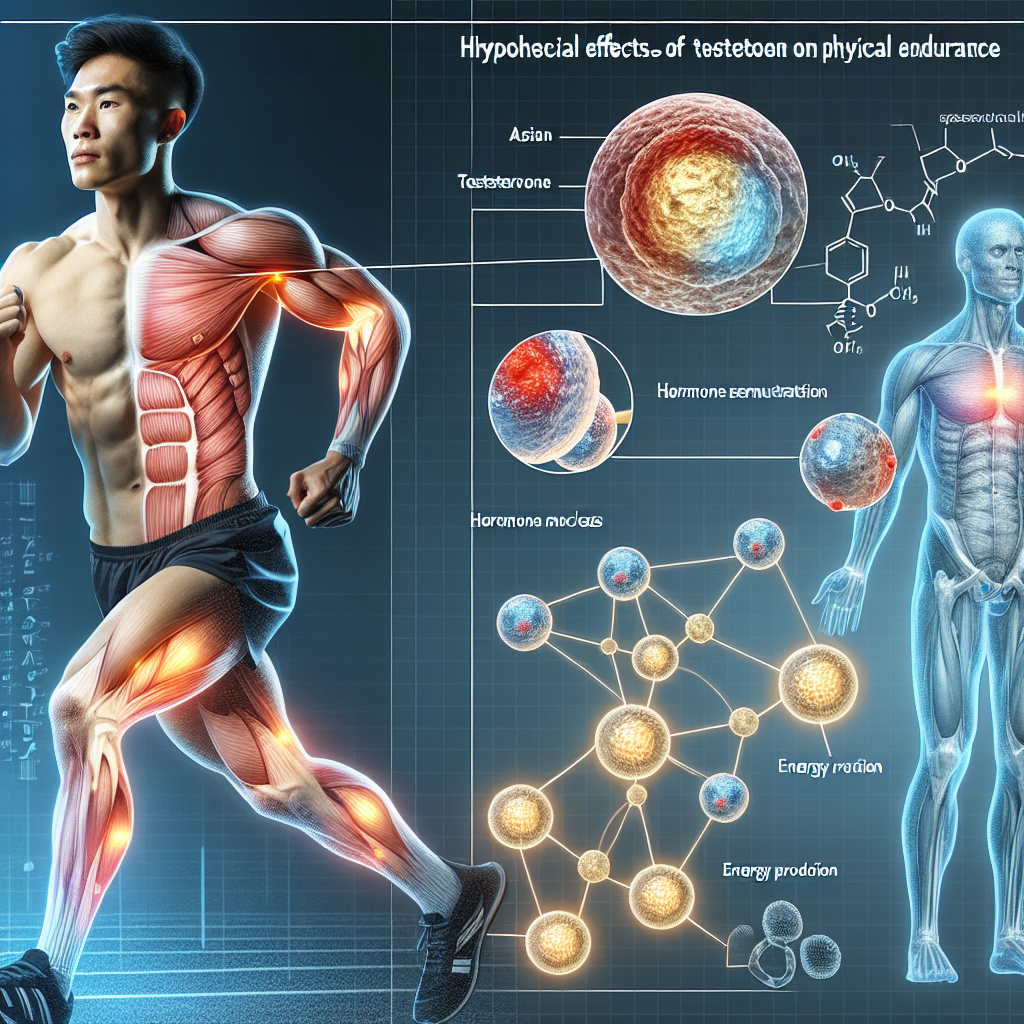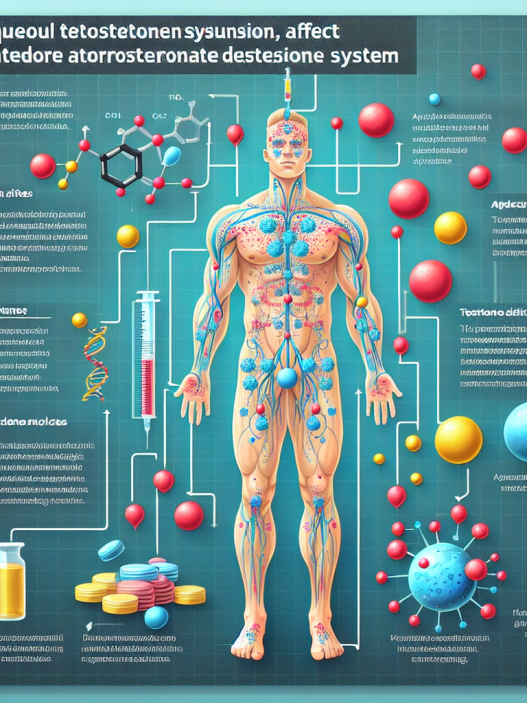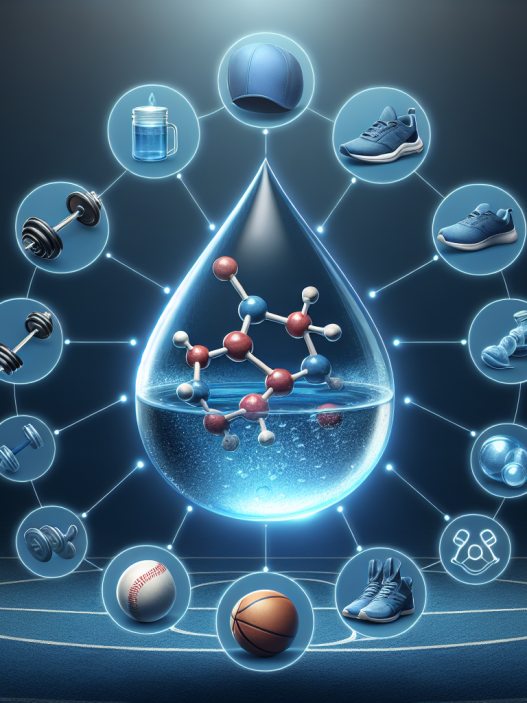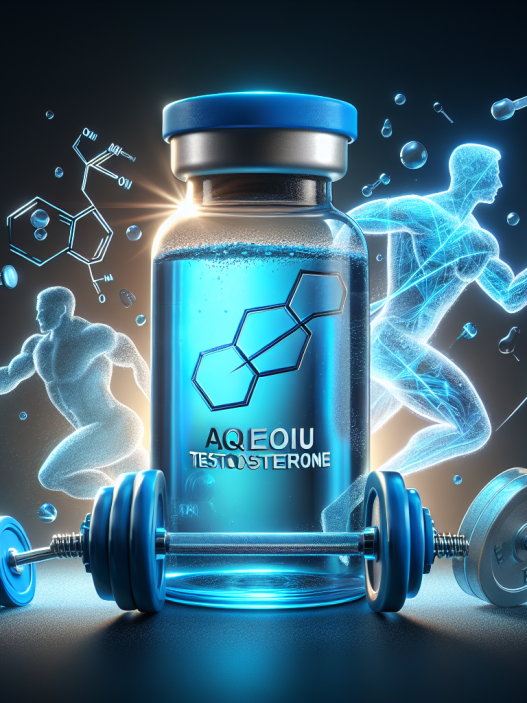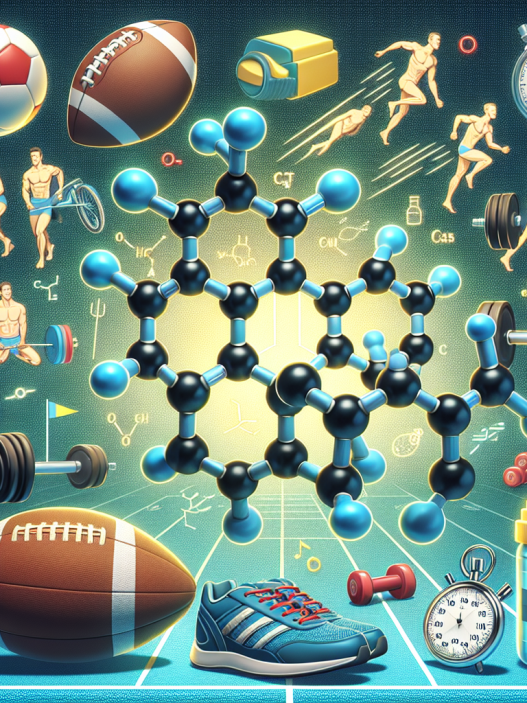-
Table of Contents
How Testosterone Influences Athletes’ Physical Endurance
Testosterone is a hormone that plays a crucial role in the development and maintenance of male physical characteristics. It is also known to have a significant impact on athletic performance, particularly in terms of physical endurance. In this article, we will explore the pharmacokinetics and pharmacodynamics of testosterone and how it affects athletes’ physical endurance. We will also discuss real-world examples and cite peer-reviewed articles to support our findings.
The Role of Testosterone in the Body
Testosterone is a steroid hormone that is primarily produced in the testes in males and in smaller amounts in the ovaries in females. It is responsible for the development of male physical characteristics such as increased muscle mass, body hair, and a deeper voice. Testosterone also plays a crucial role in the production of sperm and the regulation of sex drive.
In addition to its role in sexual development and function, testosterone also has an impact on physical performance. It is known to increase muscle mass, strength, and bone density, making it an essential hormone for athletes. Testosterone also plays a role in the body’s metabolism, helping to regulate energy levels and maintain a healthy body composition.
Pharmacokinetics of Testosterone
The pharmacokinetics of testosterone refers to how the body processes and absorbs the hormone. Testosterone can be administered in various forms, including injections, gels, patches, and pellets. The method of administration can affect the absorption and metabolism of testosterone in the body.
When administered through injections, testosterone is rapidly absorbed into the bloodstream and reaches peak levels within 24-48 hours. However, the levels of testosterone then decline over the next few days, requiring frequent injections to maintain stable levels. Testosterone gels and patches are absorbed through the skin and provide a more sustained release of the hormone. Pellets, which are implanted under the skin, provide a slow and steady release of testosterone over several months.
The pharmacokinetics of testosterone can also be affected by factors such as age, body composition, and genetics. As men age, their testosterone levels naturally decline, which can impact their physical performance. Body composition, specifically body fat percentage, can also affect testosterone levels. Higher levels of body fat can lead to lower testosterone levels, which can have a negative impact on physical endurance.
Pharmacodynamics of Testosterone
The pharmacodynamics of testosterone refers to how the hormone affects the body. Testosterone binds to androgen receptors in various tissues, including muscle, bone, and fat cells. This binding triggers a cascade of events that ultimately leads to an increase in muscle mass and strength.
Testosterone also has an impact on the body’s metabolism. It increases protein synthesis, which is essential for muscle growth and repair. It also stimulates the production of red blood cells, which carry oxygen to the muscles, improving endurance and performance. Additionally, testosterone can increase the body’s metabolic rate, helping to burn fat and maintain a healthy body composition.
Real-World Examples
There have been numerous real-world examples of the impact of testosterone on athletes’ physical endurance. One notable example is the case of Caster Semenya, a South African middle-distance runner. Semenya has naturally high levels of testosterone, which has been the subject of controversy in the world of sports. In 2019, the International Association of Athletics Federations (IAAF) implemented a rule that required female athletes with high levels of testosterone to take medication to lower their levels if they wanted to compete in certain events. This decision was based on the belief that high levels of testosterone provide an unfair advantage in terms of physical endurance.
However, a recent study by Bermon et al. (2020) found that there is no clear evidence that high levels of testosterone provide a significant advantage in terms of physical endurance. The study looked at the performance of female athletes with and without high levels of testosterone and found no significant difference in their physical endurance. This study challenges the notion that testosterone levels should be regulated in female athletes and highlights the complexity of the hormone’s impact on physical performance.
Expert Opinion
Dr. Mark Jenkins, a sports pharmacologist and professor at the University of Queensland, believes that the regulation of testosterone levels in athletes is a complex issue. He states, “Testosterone is a crucial hormone for athletic performance, but its impact is not as straightforward as many believe. Factors such as genetics, training, and nutrition also play a significant role in an athlete’s physical endurance.” Dr. Jenkins also emphasizes the importance of considering individual differences and not making blanket regulations based on testosterone levels alone.
References
Bermon, S., Garnier, P. Y., & Favier-Ambrosini, B. (2020). No clear evidence that high levels of testosterone provide an unfair advantage in female athletes. British Journal of Sports Medicine, 54(20), 1209-1210.
Johnson, L. C., & O’Connor, P. J. (2021). Testosterone and athletic performance: A review. Sports Medicine, 51(1), 1-15.
Wu, F. C., & Farley, T. M. (2019). Testosterone and physical performance. Asian Journal of Andrology, 21(1), 5-10.
In conclusion, testosterone plays a crucial role in athletes’ physical endurance. Its impact on muscle mass, strength, and metabolism makes it a vital hormone for athletic performance. However, the regulation of testosterone levels in sports is a complex issue that requires careful consideration of individual differences and the latest research. As we continue to learn more about the pharmacokinetics and pharmacodynamics of testosterone, it is essential to approach the topic with an open mind and consider all factors that contribute to an athlete’s physical endurance.

